Lock 28
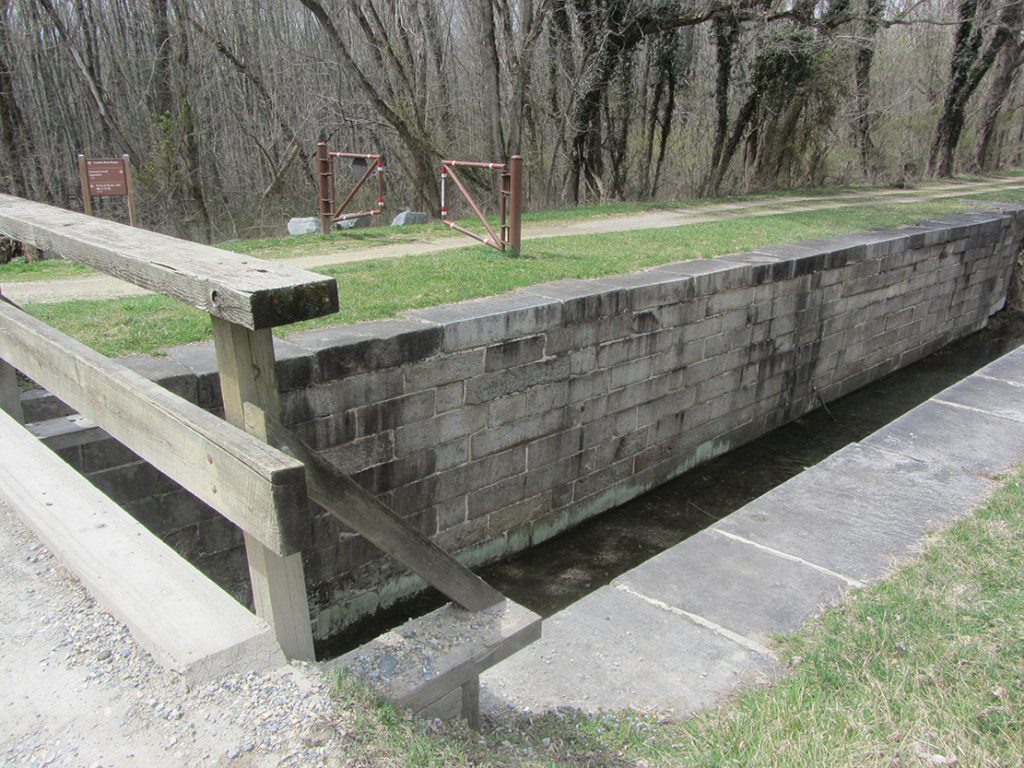
This point of the Canal is where John Mosby’s confederate raiders crossed the river on July 4, 1864 en route to their Calico Raid at Point of Rocks. It is […]
Lock 75
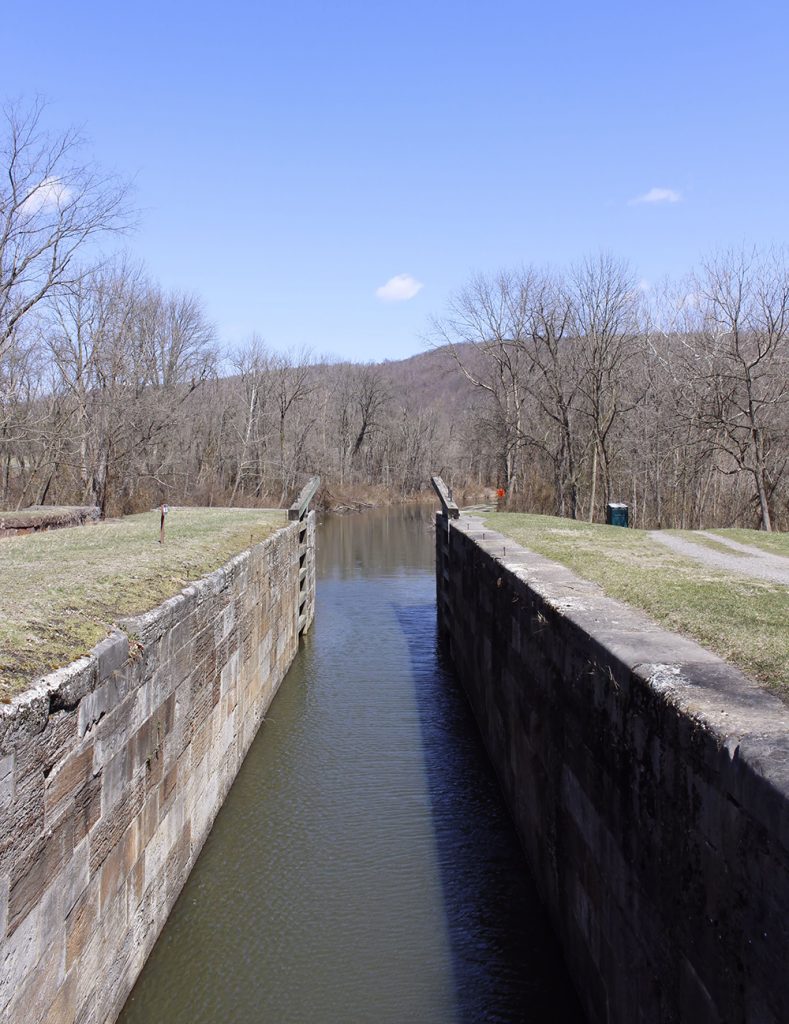
Lock 75 is the last lift lock on the C&O Canal. This lock has a lift of 10′ and has a total lift of 609.193′ above the Georgetown tide lock.
Lock 74
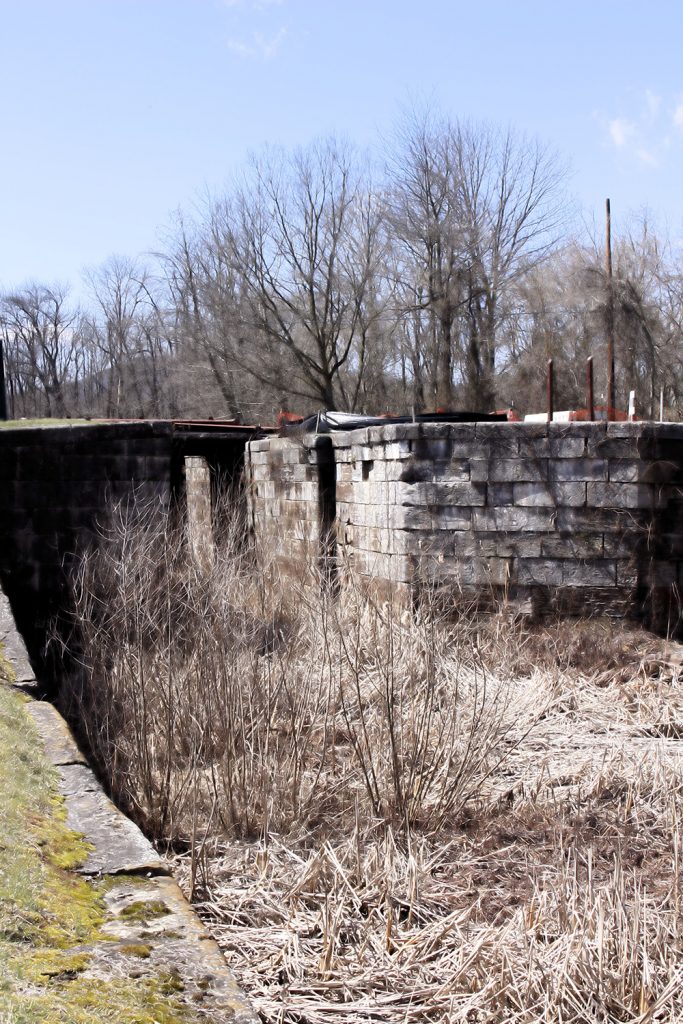
Lock 74 was completed in 1841 and later rebuilt in 1869. This is one of the few locks along the canal that has a 10′ lift as opposed to the […]
Lock 73
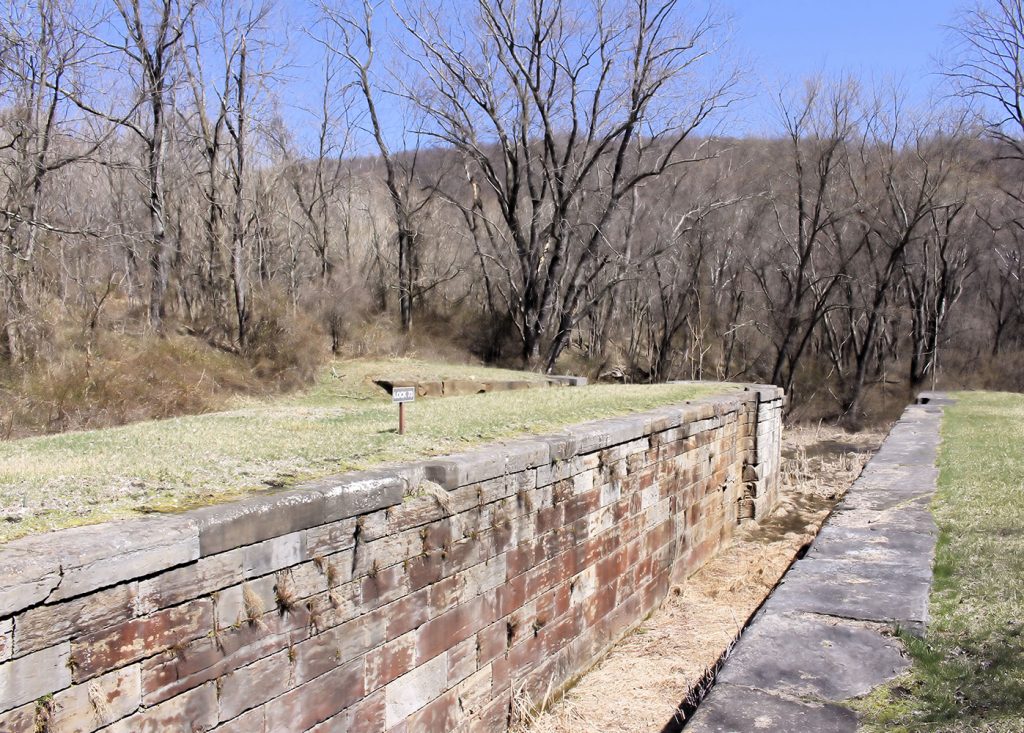
Lock 73 sat in an area referred to as “The Narrows” during canal days. “The Narrows” is an area along the canal where the canal, highway, and railroad are squeezed […]
Lock 72
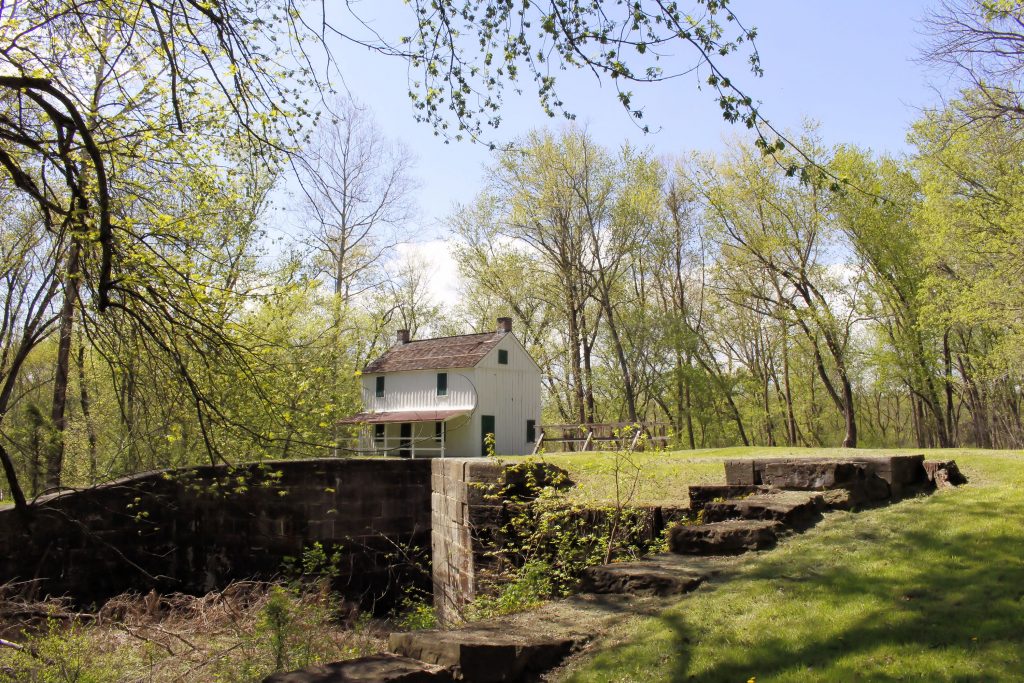
Lock 72 was finished in 1841 and it was constructed of stone from the nearby quarry as opposed to the 13 composite locks before it. In the days that the […]
Lock 71
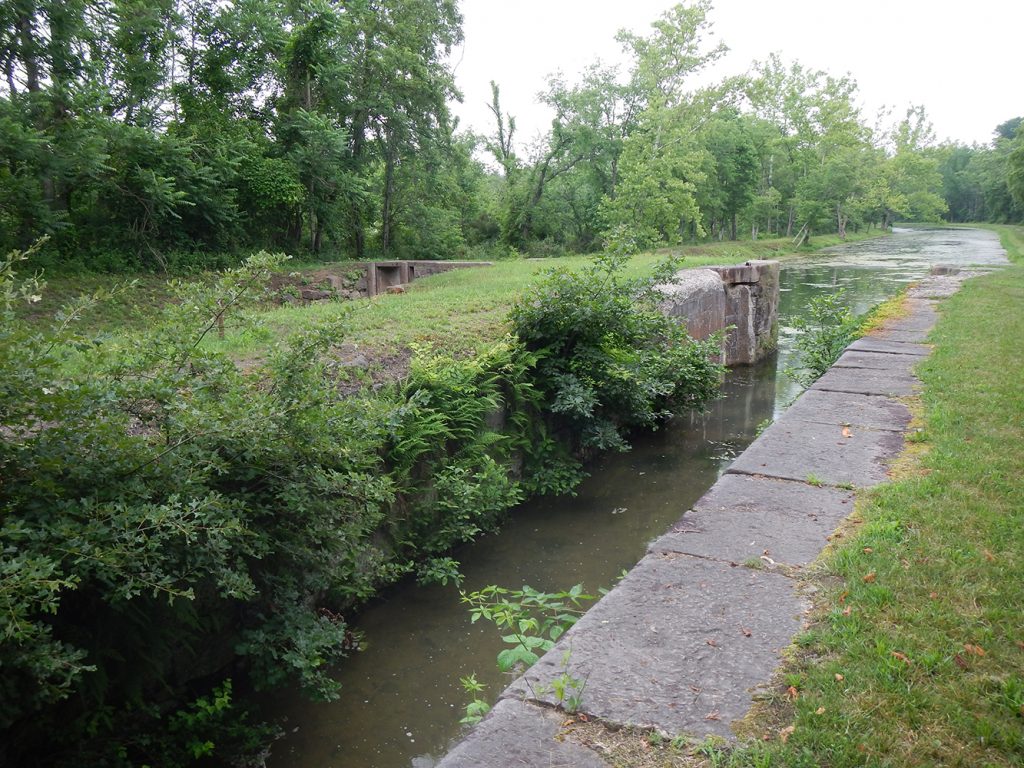
Lock 71 is in better condition than most locks along the Canal considering it is the last of the composite locks. It was built mainly of stone but the lock […]
Lock 70
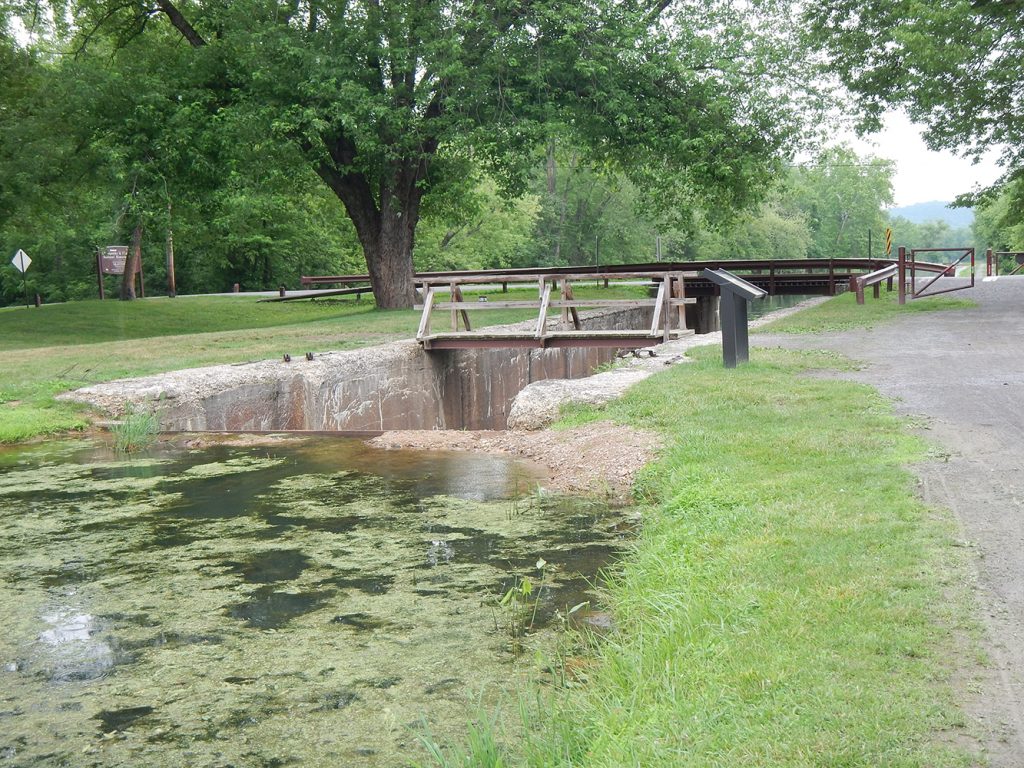
Lock 70 is in good condition, re-built after a fire in 1906 that destroyed a bridge over the Canal. Lockhouse 70 stands nearby, a two-story white frame lockhouse in the […]
Lock 69
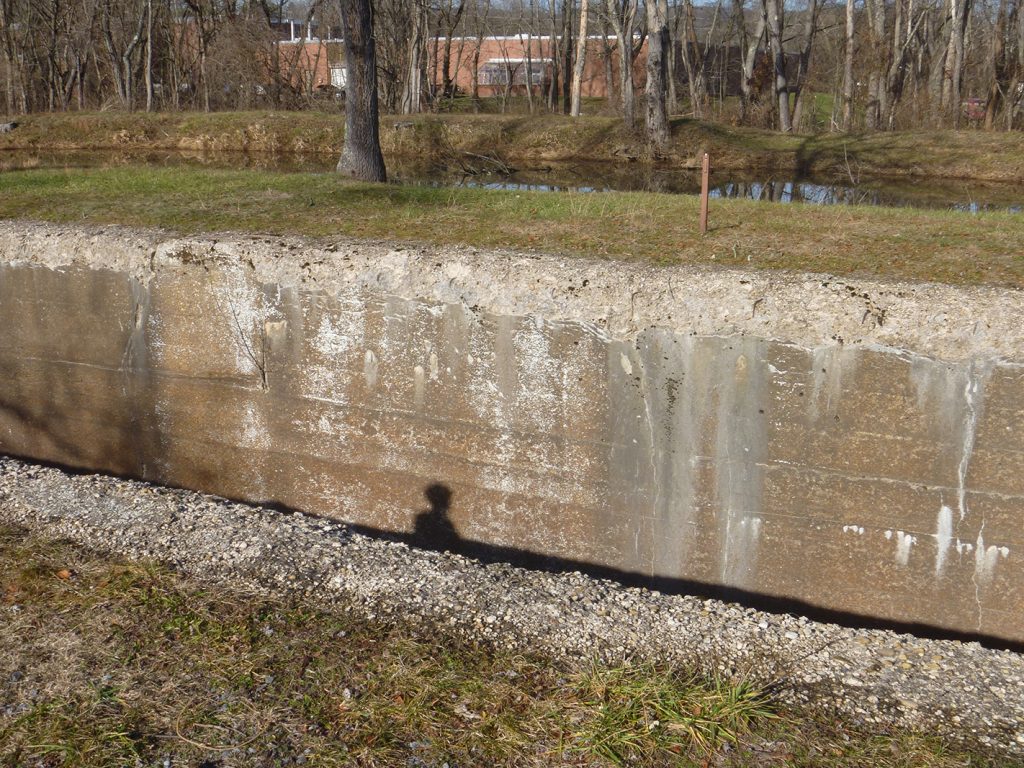
Three locks exist in a half-mile stretch in Oldtown. Locks 69-71 are the last three composite locks on the Canal. Lock 69, also known as “Twigg’s Lock” is the first. The […]
Lock 68
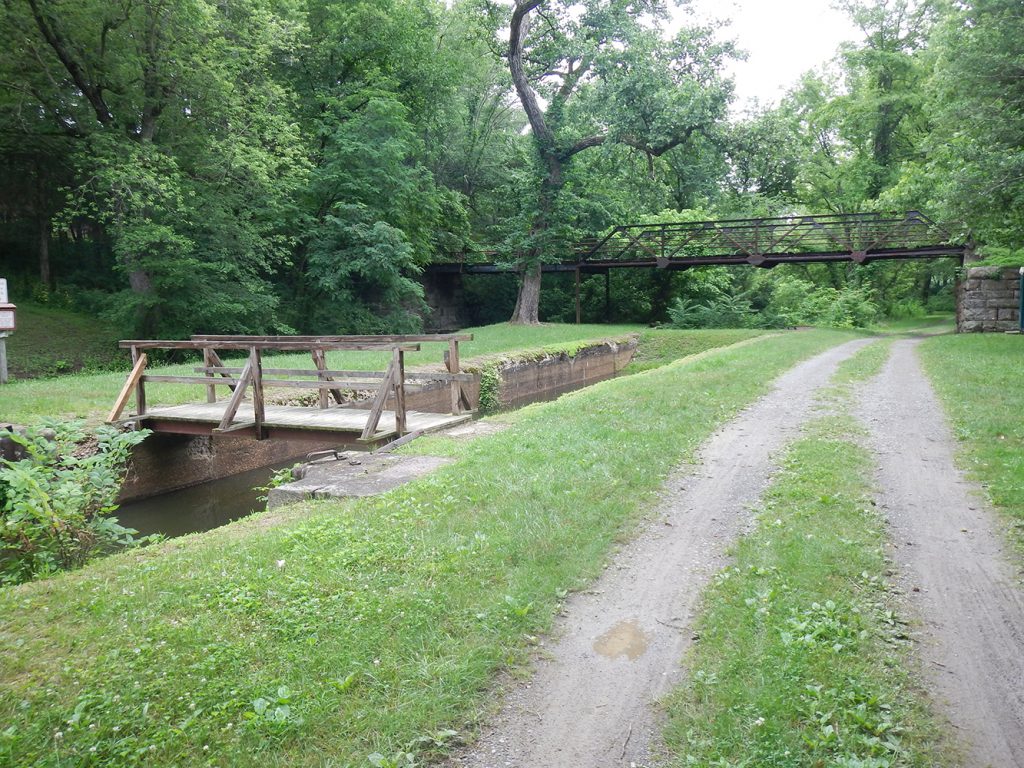
Lock 68 is just above the path down to Potomac Forks, the point in the river where the North and South branches of the Potomac join for the journey to […]
Lock 67
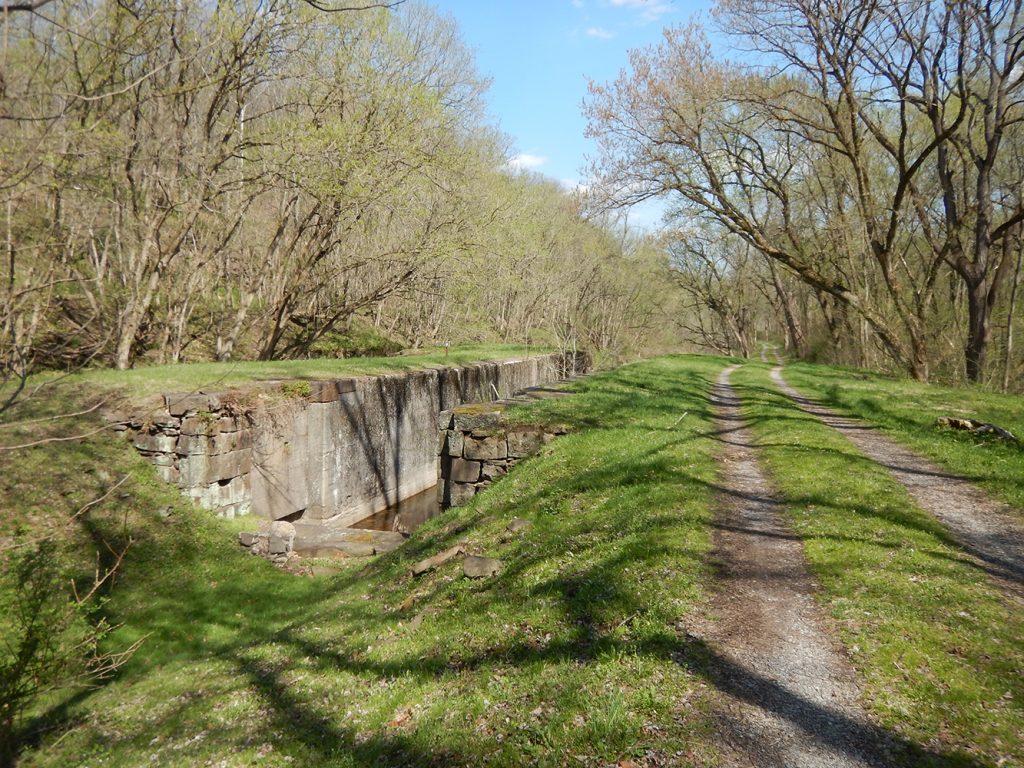
For the past 17 miles, the C&O Canal and the Potomac River has acted as the southern boundary of the sprawling Green Ridge State Forest, Maryland’s second largest forest preserve. […]
Lock 66
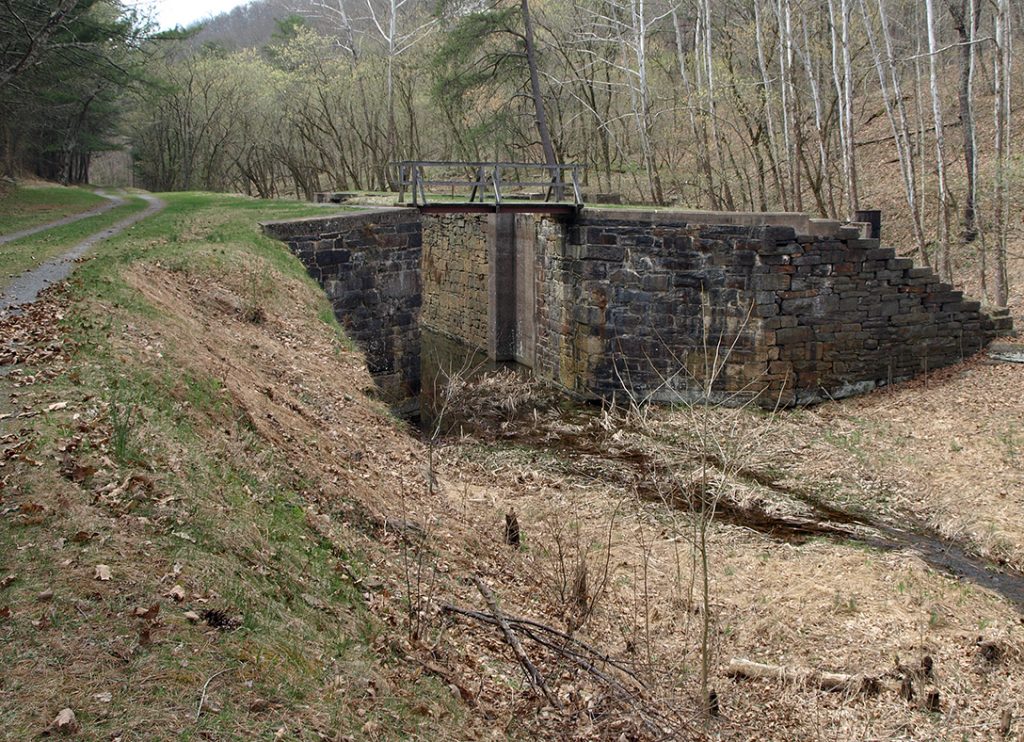
This is the last of three closely spaced composite locks (beginning with Lock 63) that lift the Canal in its approach to the Paw Paw Tunnel. Plans were to build […]
Lock 65: The Missing Lock
Have you heard of the “missing lock?” The truth about the missing lock is that it was never truly missing in the first place. The truth is it was never […]
Lock 64 2/3
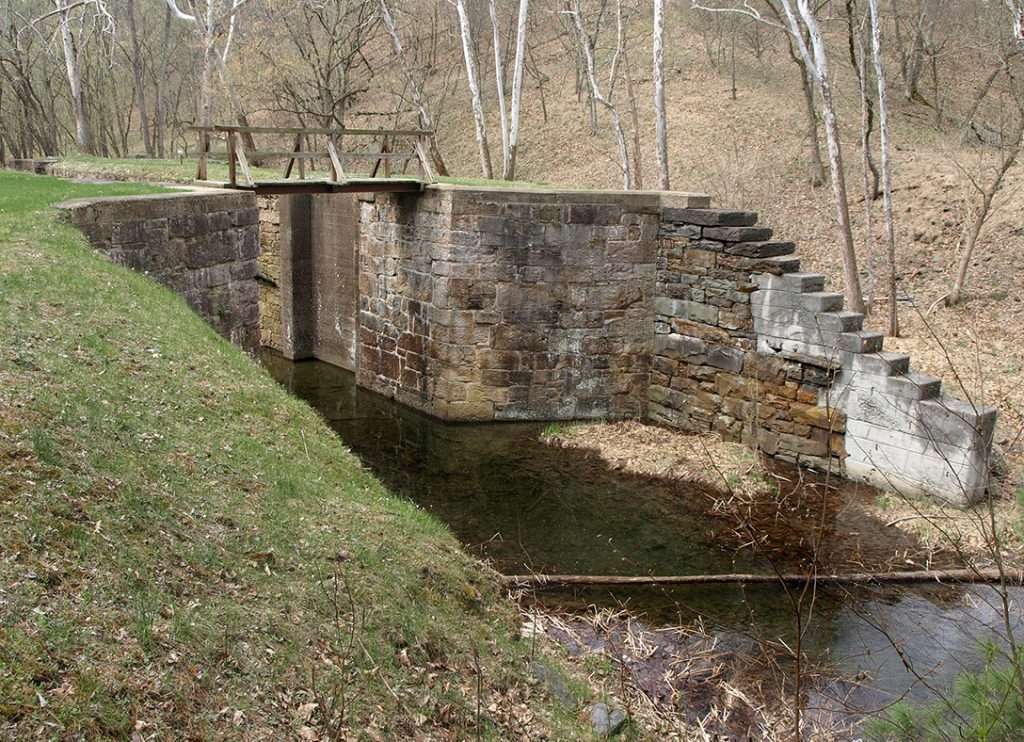
Lock 62
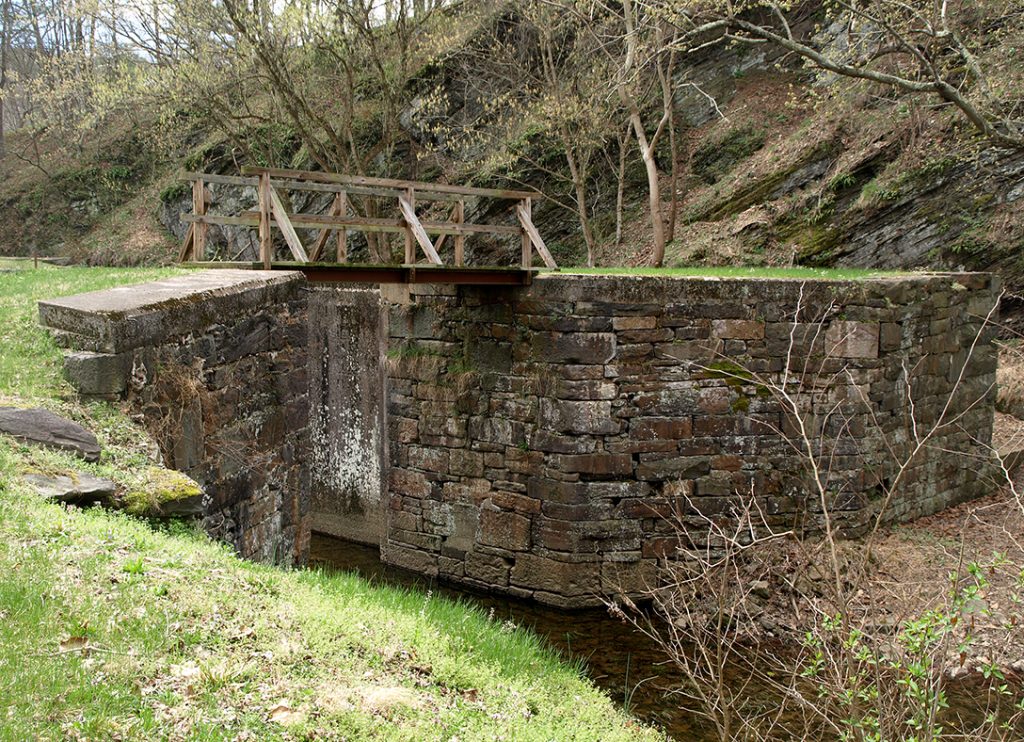
Like several locks in this section of the Canal, concrete replaces several sections. The remains of the lockhouse are also nearby. The free overnight campsite provides a portable toilet, picnic […]
Lock 63 1/3
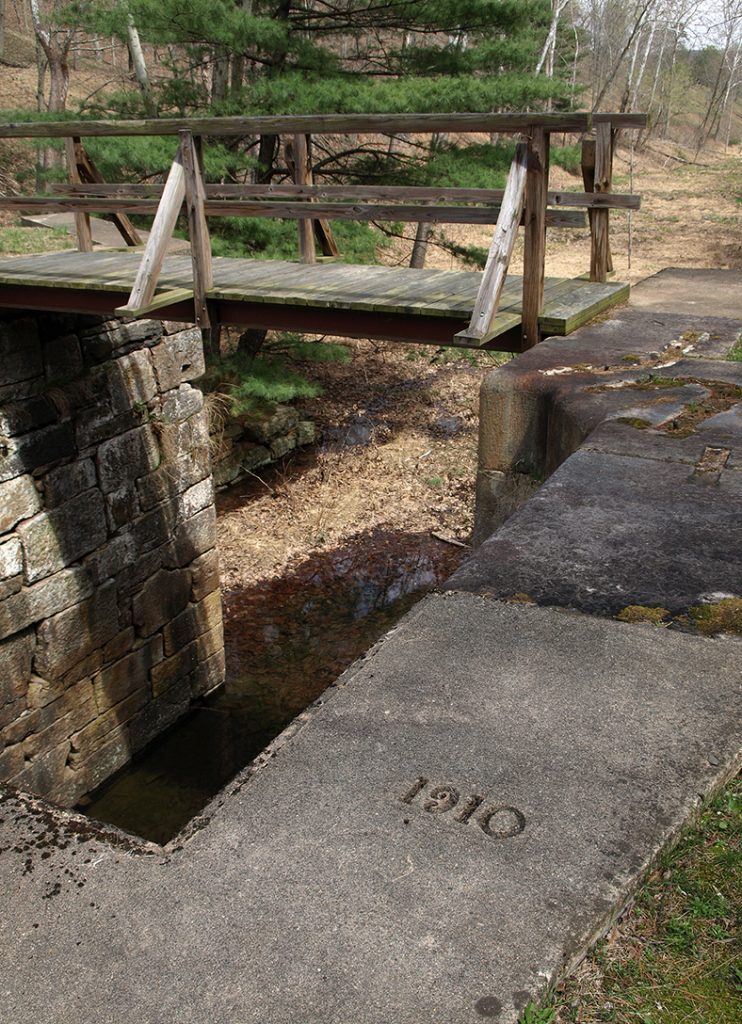
Lock 61
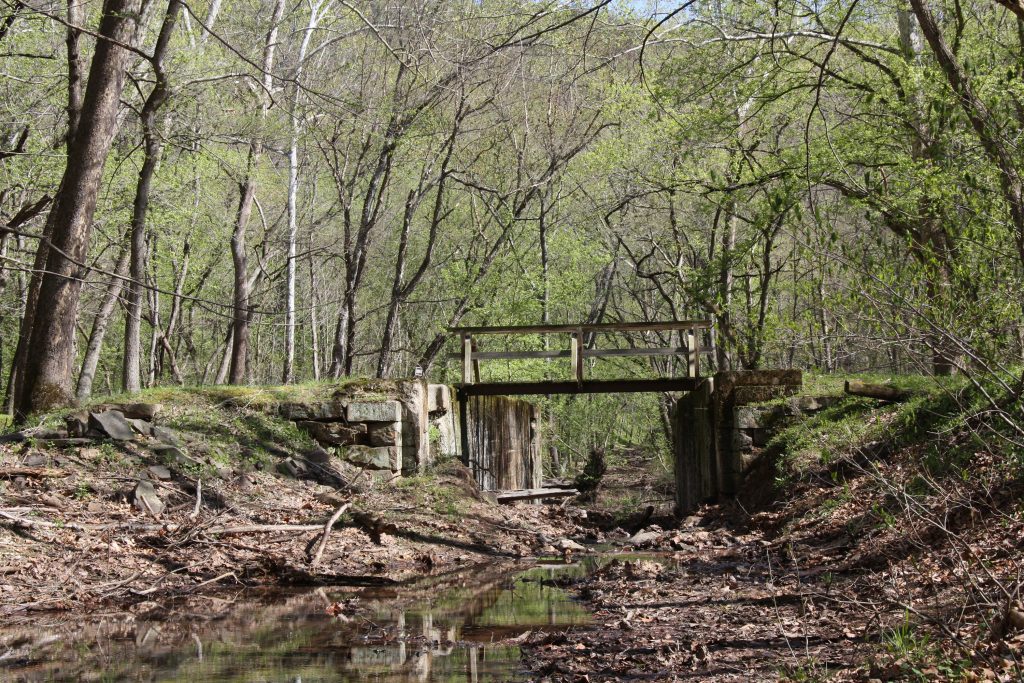
Concrete covers most of this lock, and it has been dammed up with stone on one end. The contractor quarried the composite stone from nearby Twigg Hollow and brought it […]
Lock 60
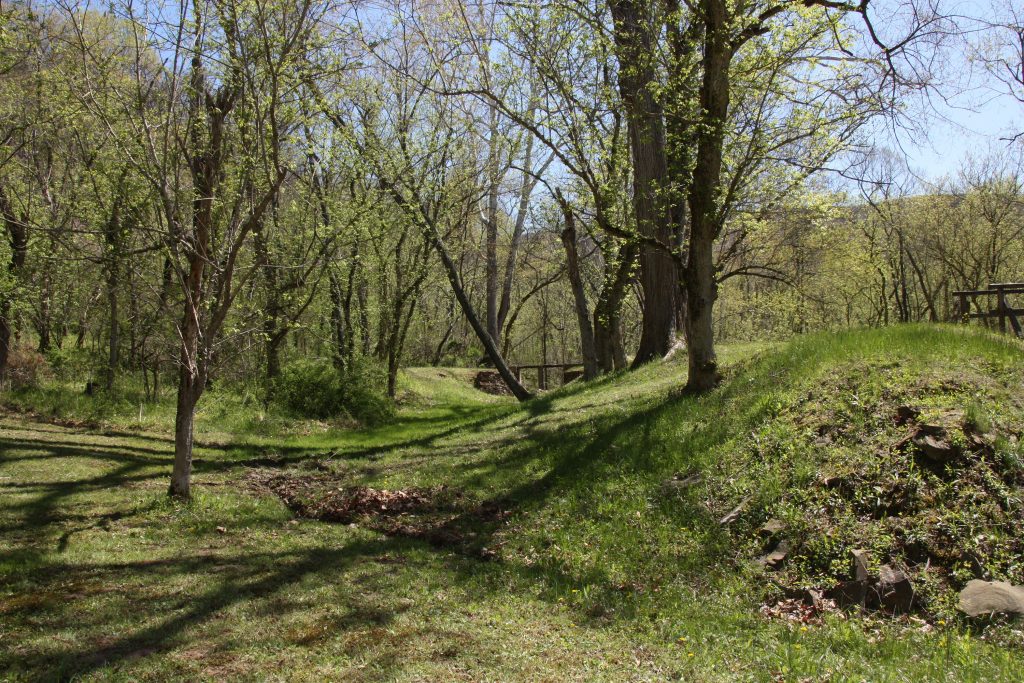
Lock 60 is one of the locks that was extended on the lower end in order to accommodate two boats. Today the concrete sides of this lock are covered with […]
Lock 59
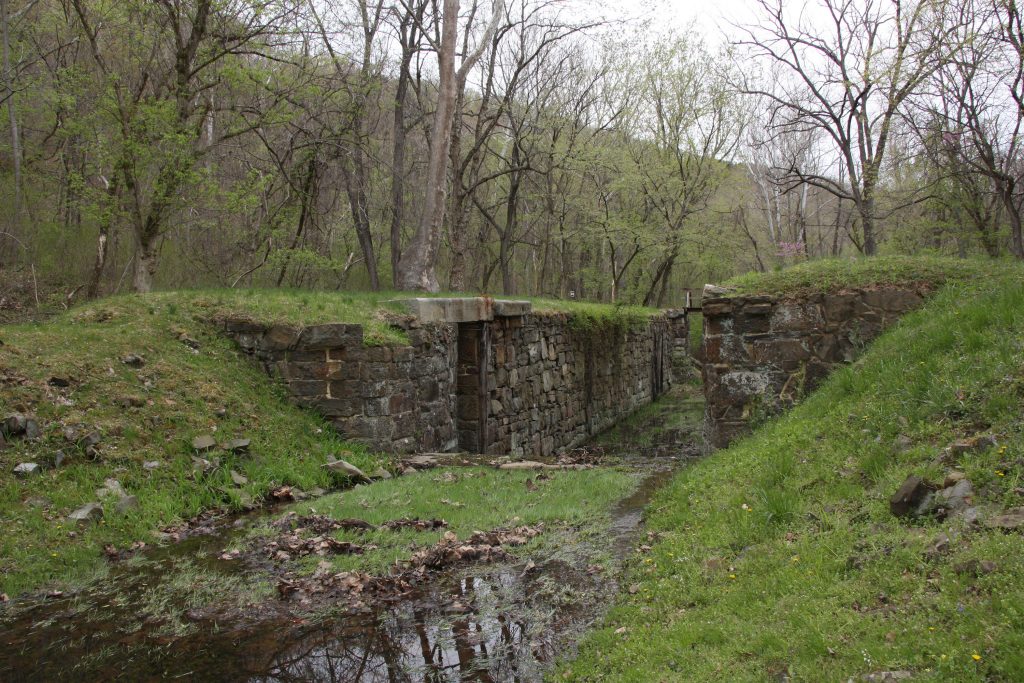
Lock 59 is another composite Lock, with some timbers still hanging on its walls. The stone foundations on the side of Lock 59 are the remains of the lockhouse that […]
Lock 58
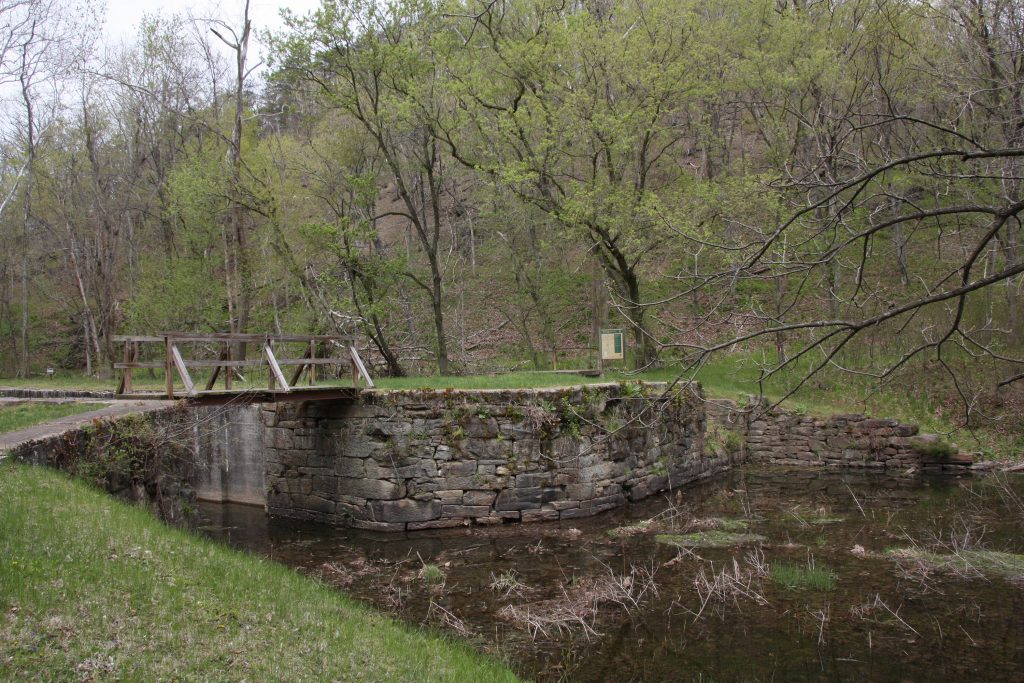
Lock 58 is located in a remote stretch of the canal and was the first of the 13 upper Locks that used a double layer of kyanized wood planks, however the […]
Lock 57
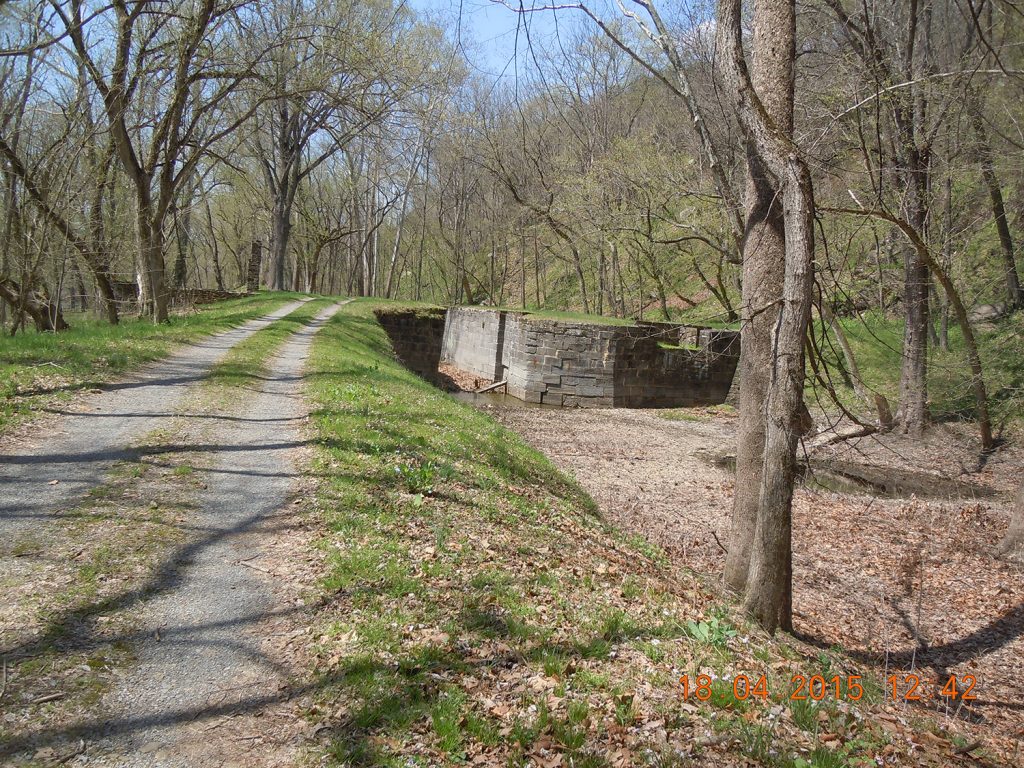
Limestone building blocks for Lock 57 arrived from two different sources: the quarry at the mouth of the Cacapon and the Little Tonoloway quarry in Hancock. Perched above the towpath […]
Lock 56
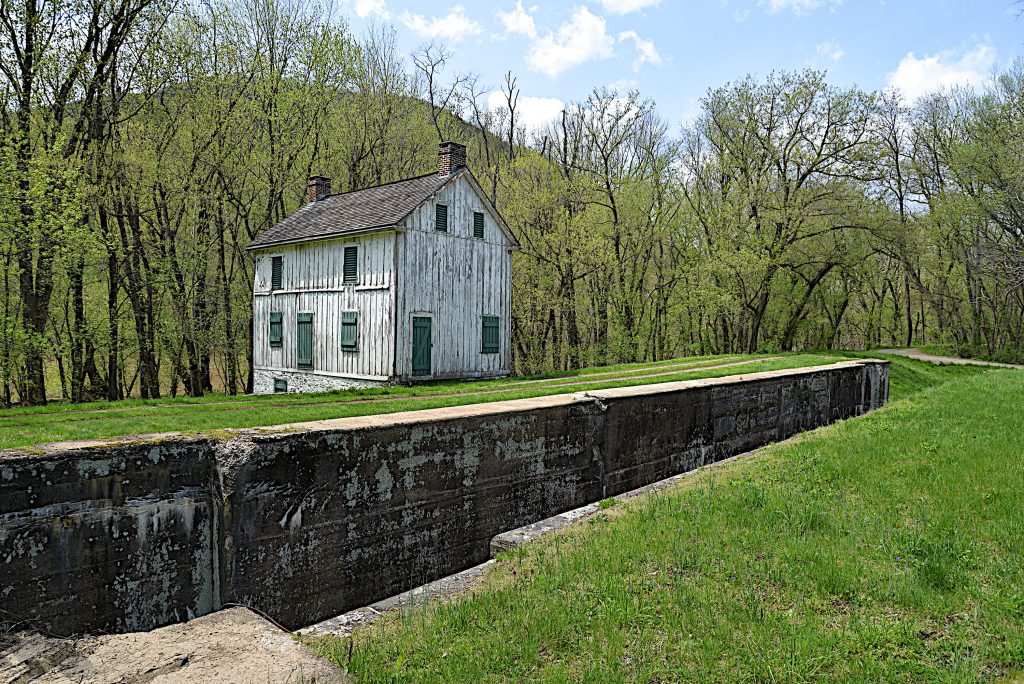
Very few traces remain of a bustling little community of Pearre that sprang up around Lock 56. In addition to the two-story lockhouse, homes and a small hotel that existed […]
Dam 6/Guard Lock 6/Lock 55
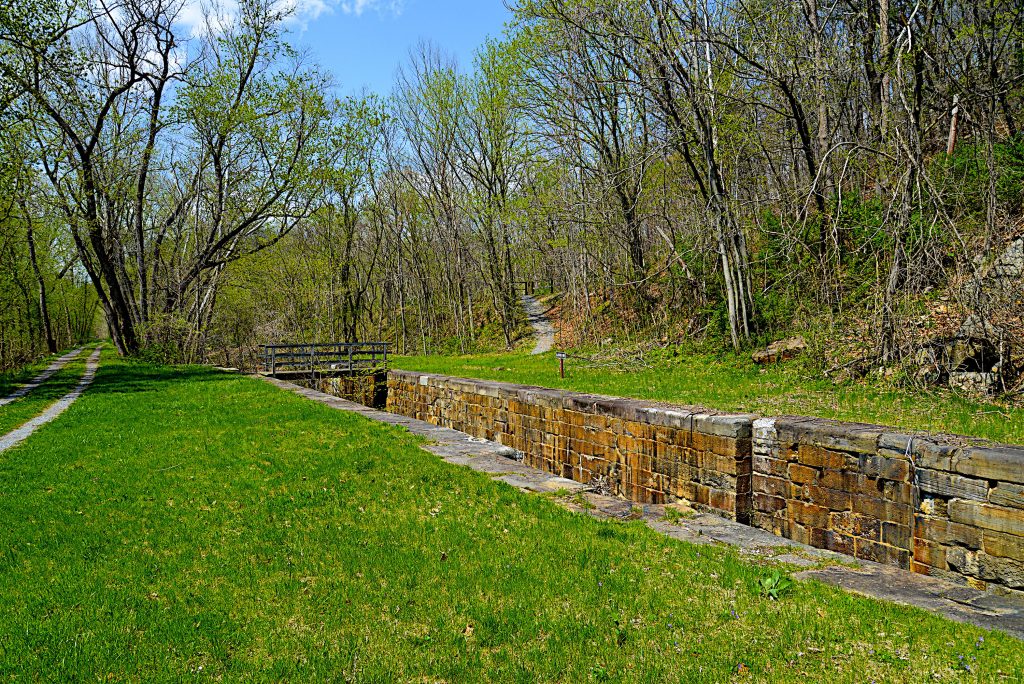
Fifty miles shy of Cumberland, Dam No. 6 marked the terminus of the Canal until the final section was completed in 1850. Guard Lock No. 6 has been filled with […]
Lock 54
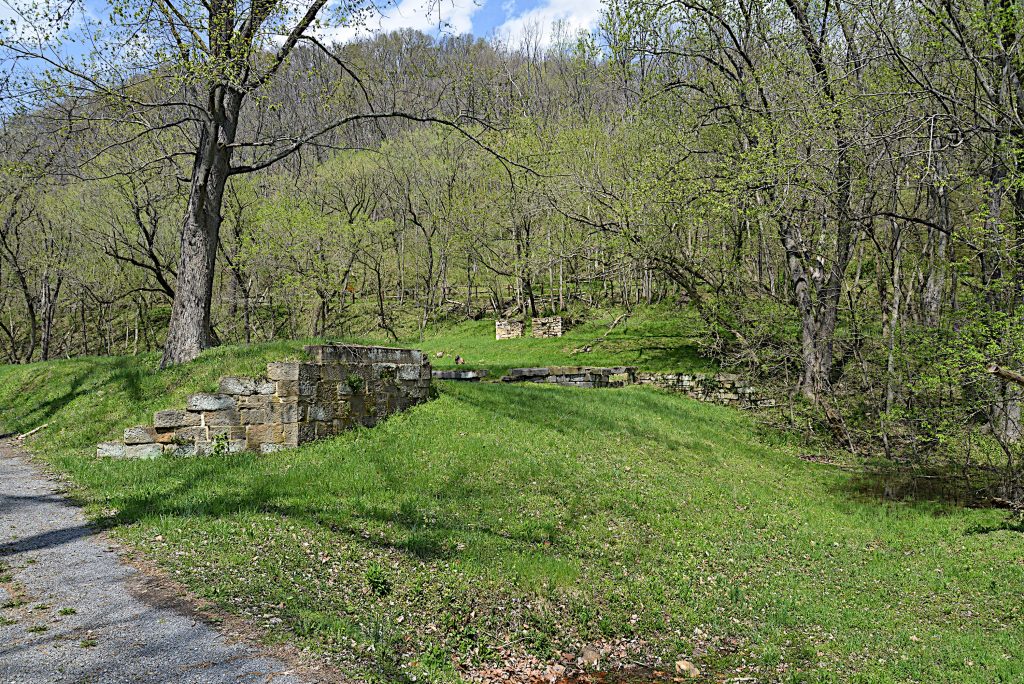
The Potomac River parallels the east side of Tonoloway Ridge before slicing through it in the vicinity of Lock 54. Here, you’ll find only the tops of the lock walls, […]
Lock 53

A tenth of a mile upstream from Leopards Mill Campsite is the remains of Lock 53, made of limestone. The lockhouse is gone, but the foundation remains across the lock.
Lock 51
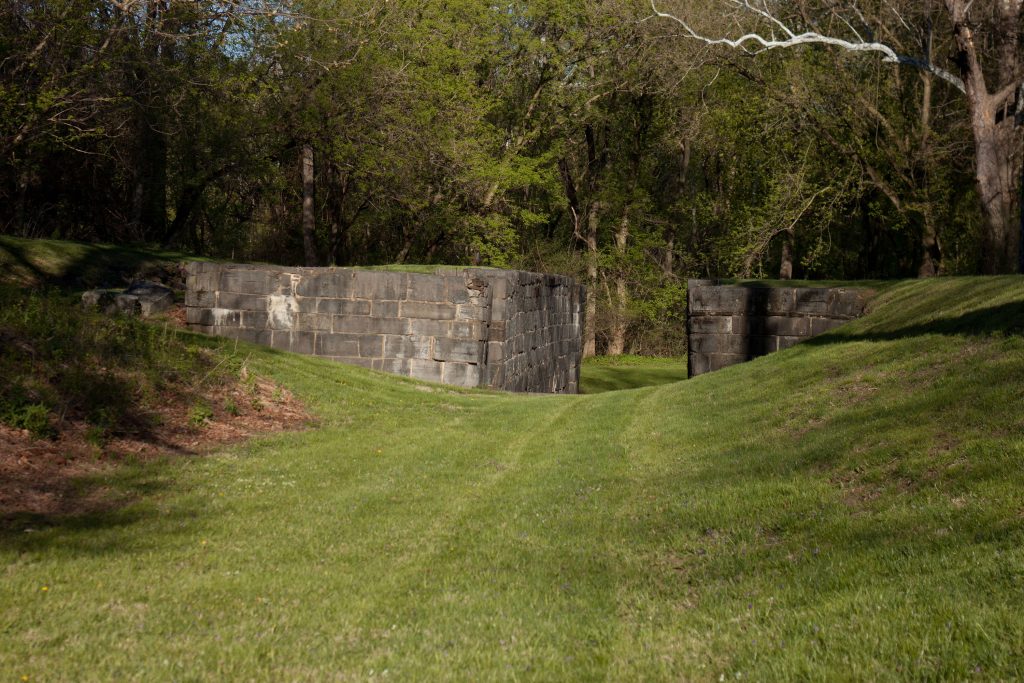
Lock 51 was completed by William Story in the fall of 1838. This lock was predominantly built using gray limestone, however the lock itself shows many signs of being rebuilt […]
Lock 52
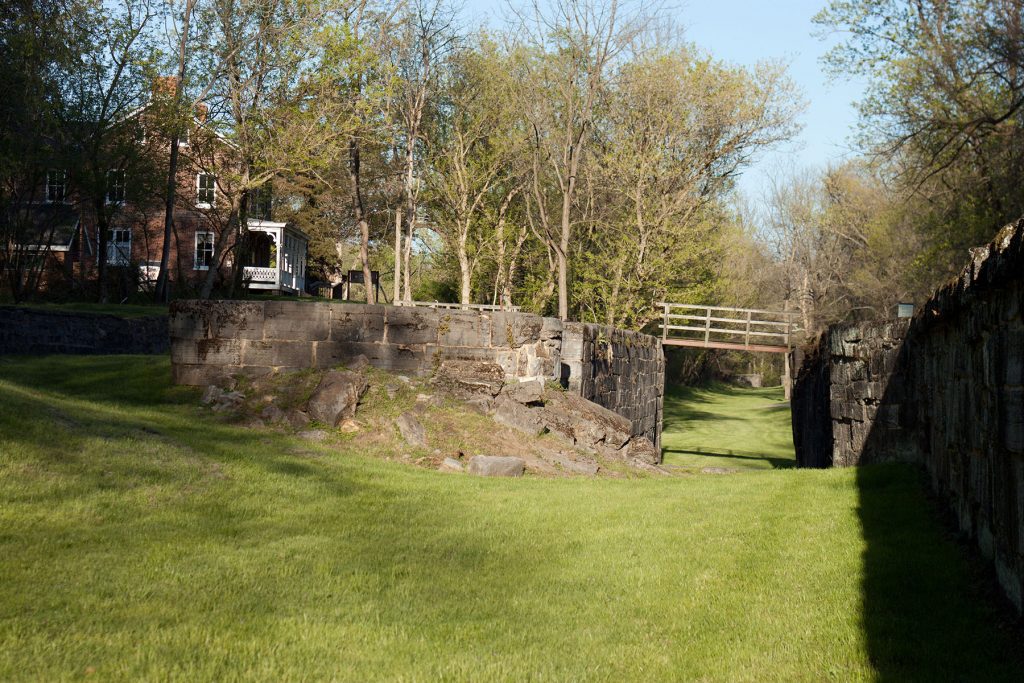
Lock 52 was built so close to the Tonoloway Creek aqueduct, they should have been built as one structure. The ruins of both are within a short distance from Bowles […]
Lock 50
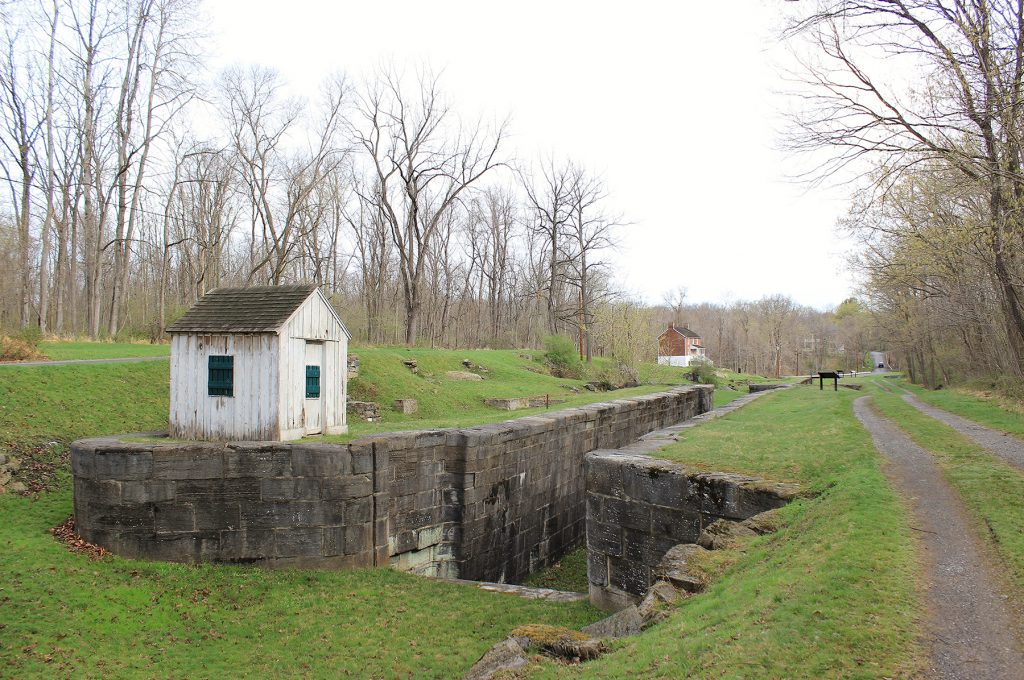
Lock 49 and Four Locks
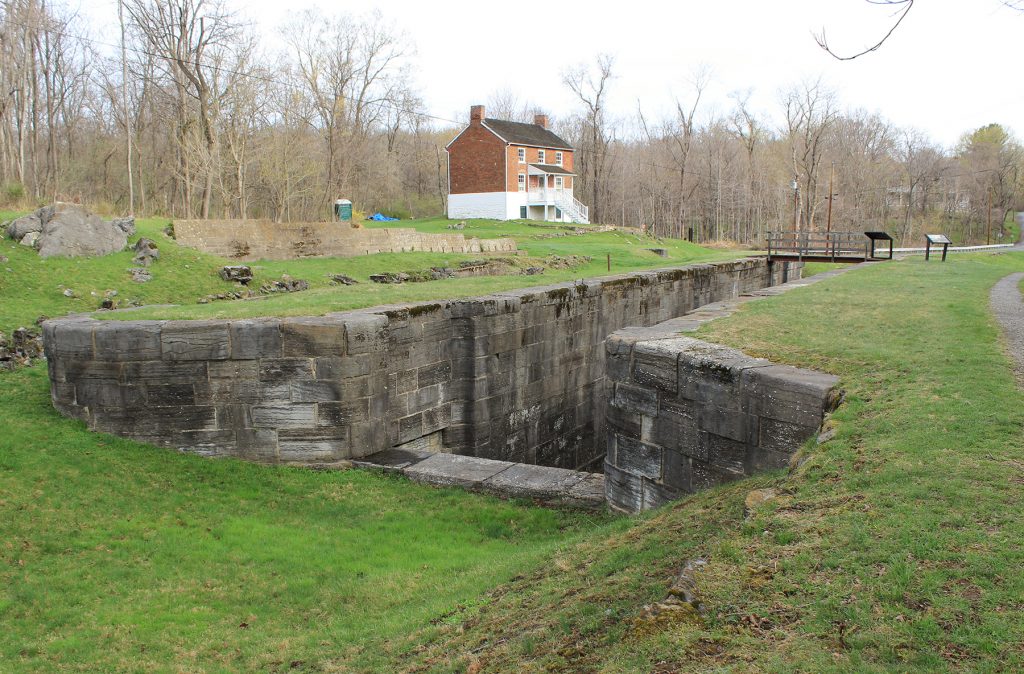
By Ranger Lisa: Walking through Four Locks, I am reminded of my childhood growing up in the Army. Each new post introduced me to a new close-knit community, new friends, […]
Lock 48
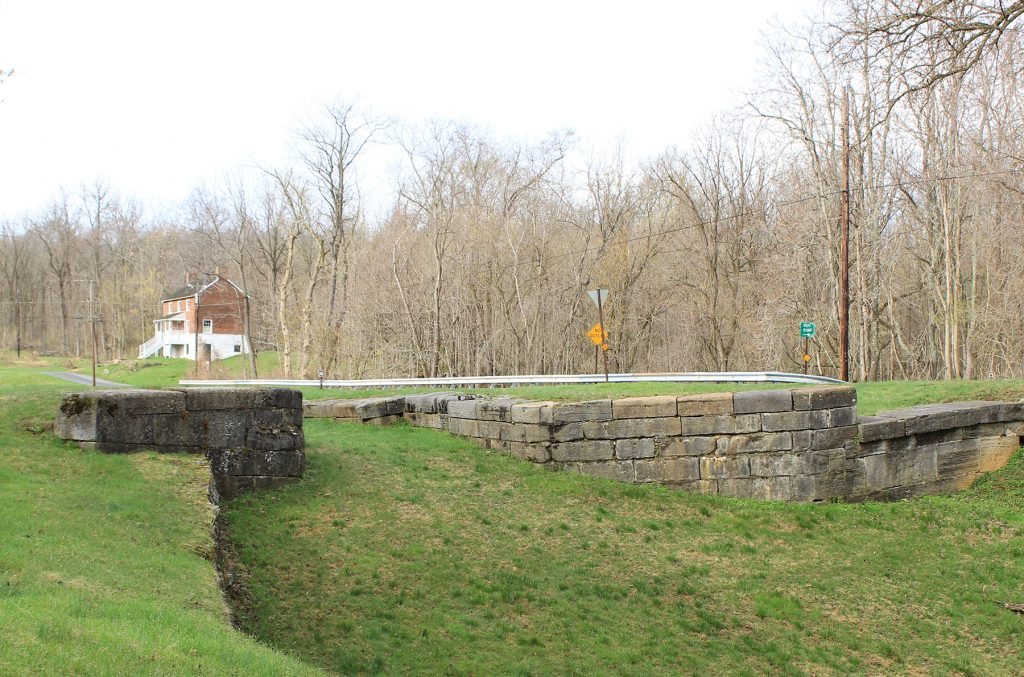
Lock 47
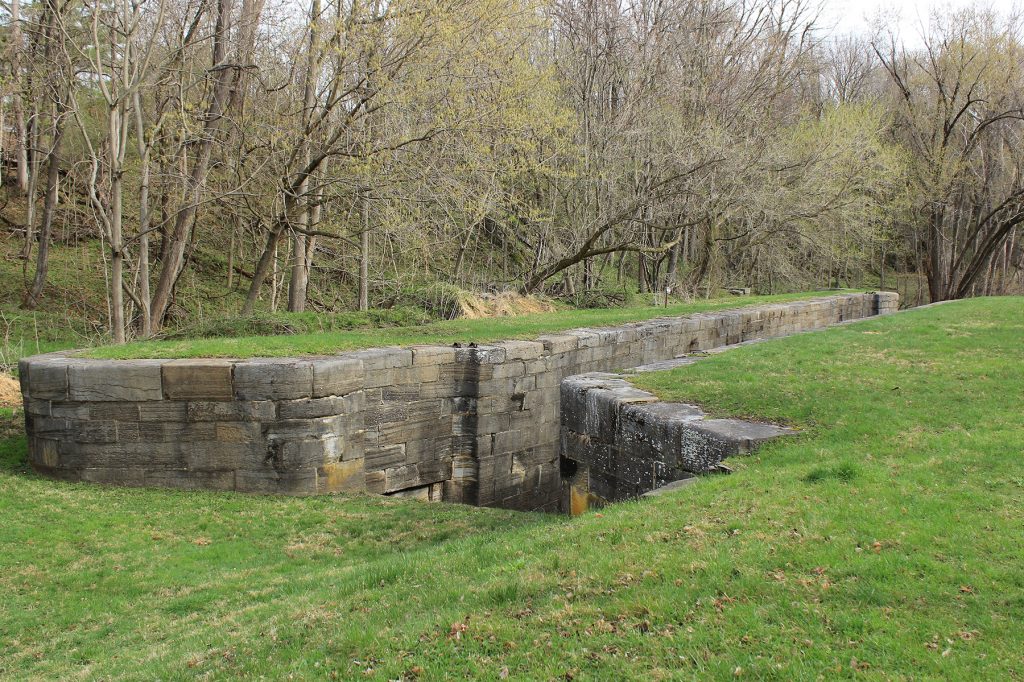
Four Locks
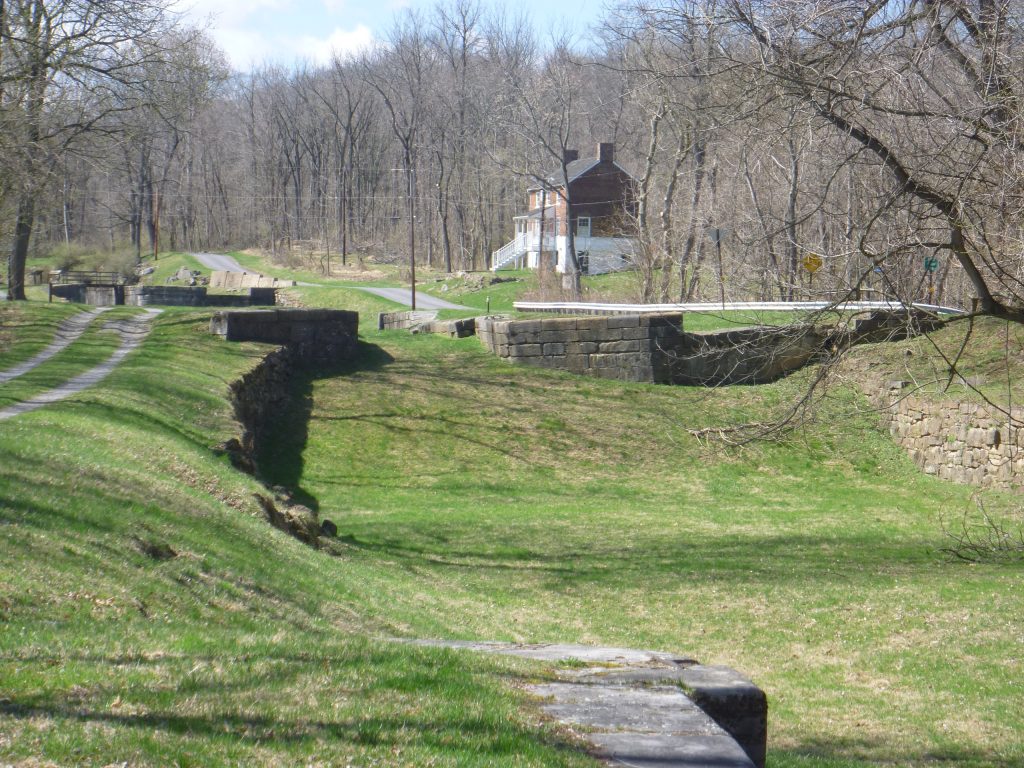
Built between 1836 and 1839, these four locks (47, 48, 49 & 50) are made of blue-gray limestone from Prather’s Quarry. Together raising the canal approximately 32 feet, boats could […]
Lock 46
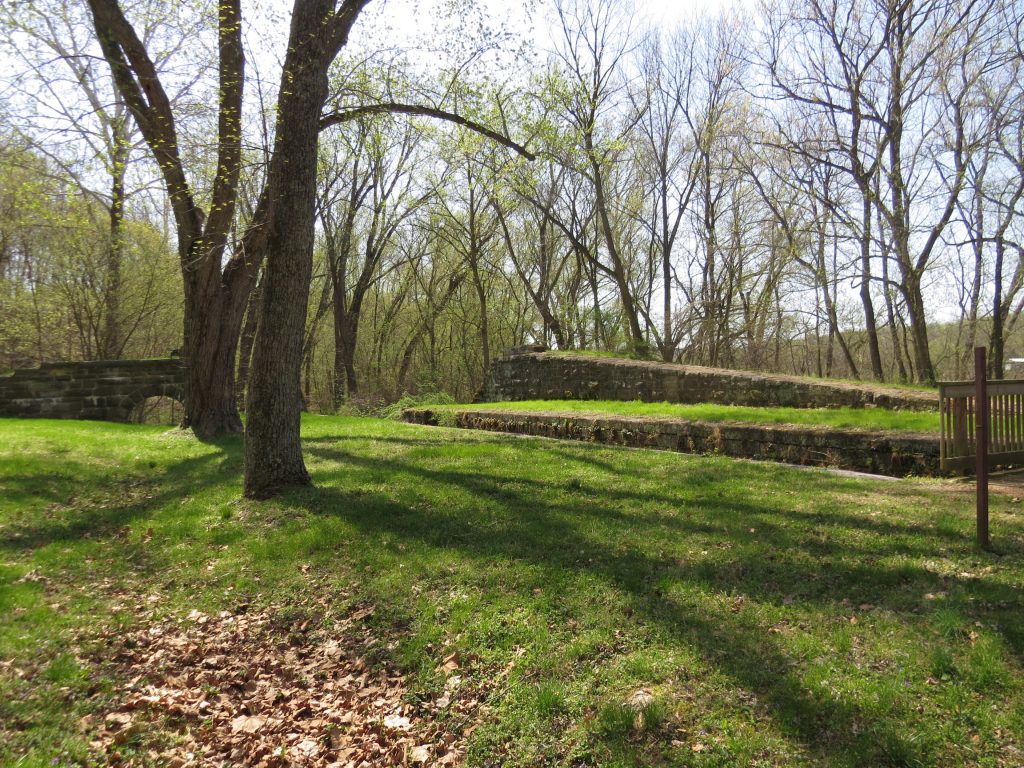
Lock 45
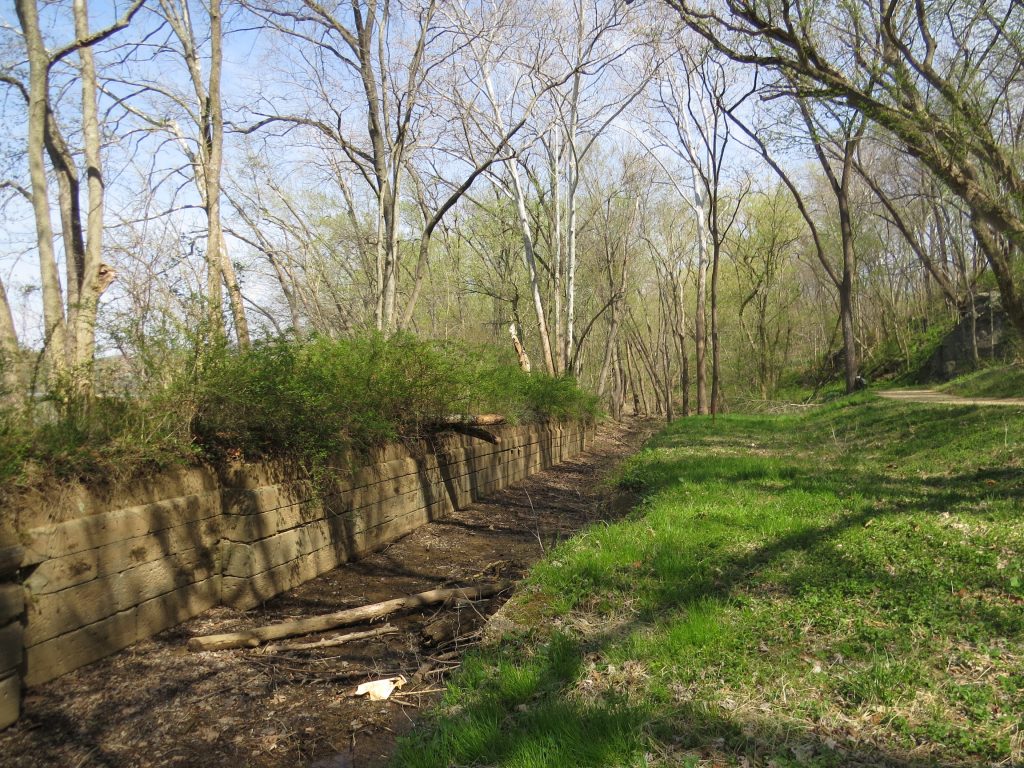
Lock 44
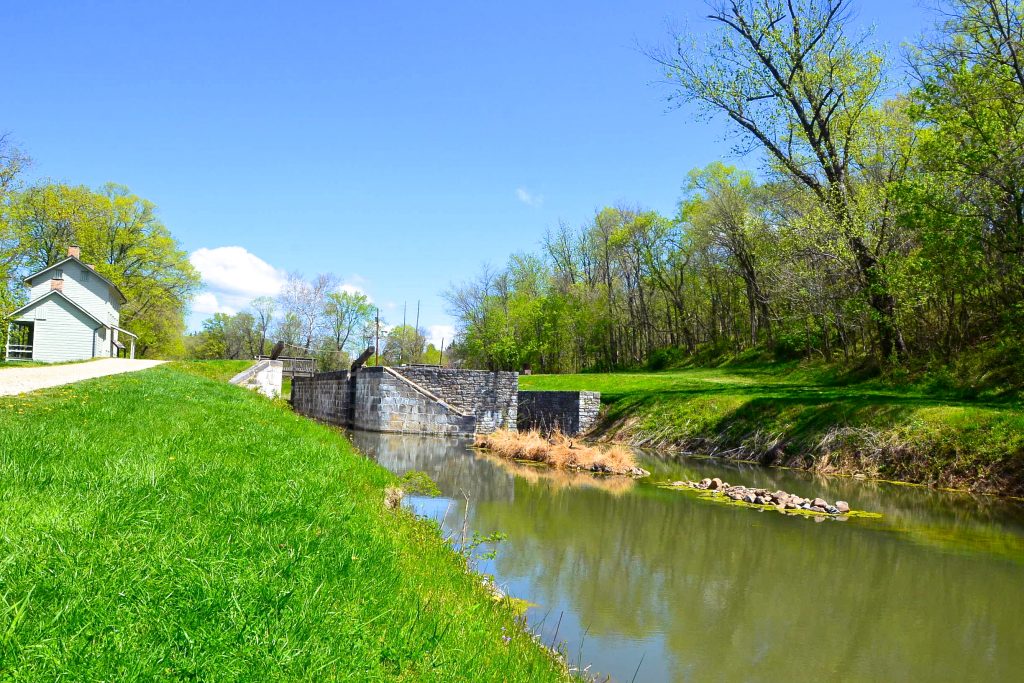
The gray and white limestone Lock 44 is located adjacent to downtown Williamsport, with an earthen dyke that leads over to Main Street. Those who are interested in Canal infrastructure […]
Lock 43
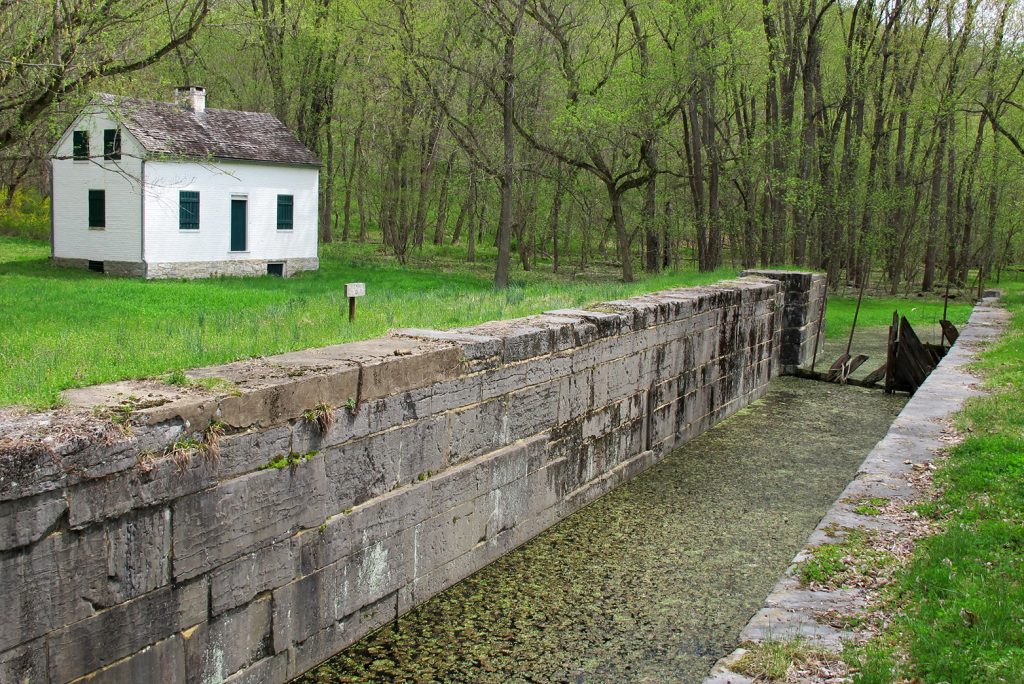
Located just upstream from the Canal’s midpoint, Lock 43 was constructed of blue-gray limestone. A white-washed brick lockhouse is still standing near the site.
Lock 42
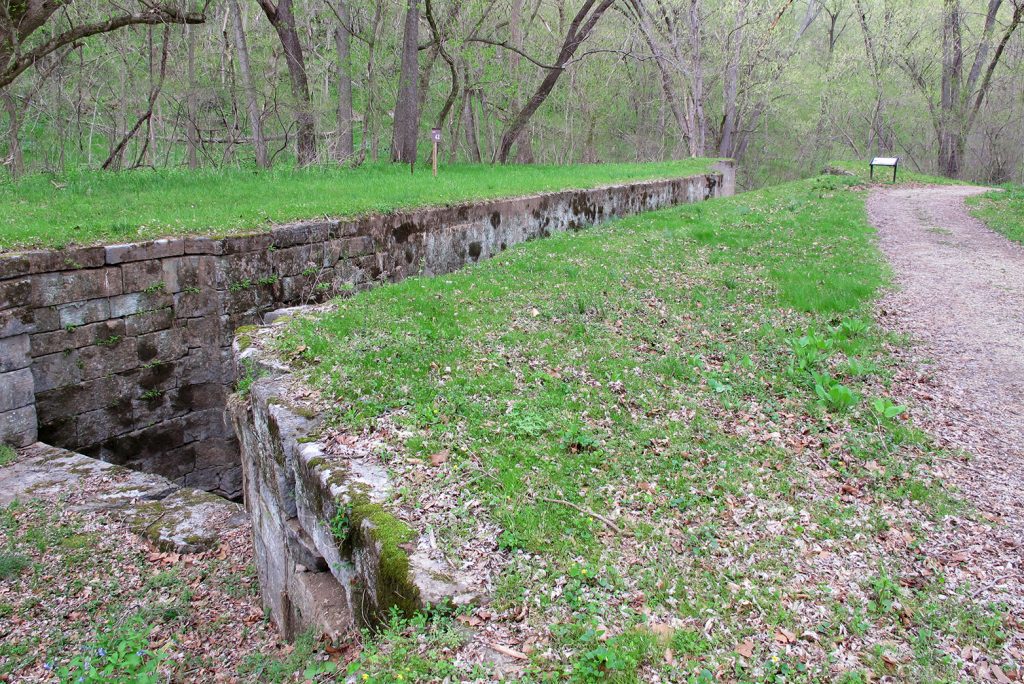
Locks 41 and 42 are located at the north end of a calm stretch of Potomac River aptly named “Big Slackwater.” Depending on which direction a Canal boat was headed, locks […]
Lock 41
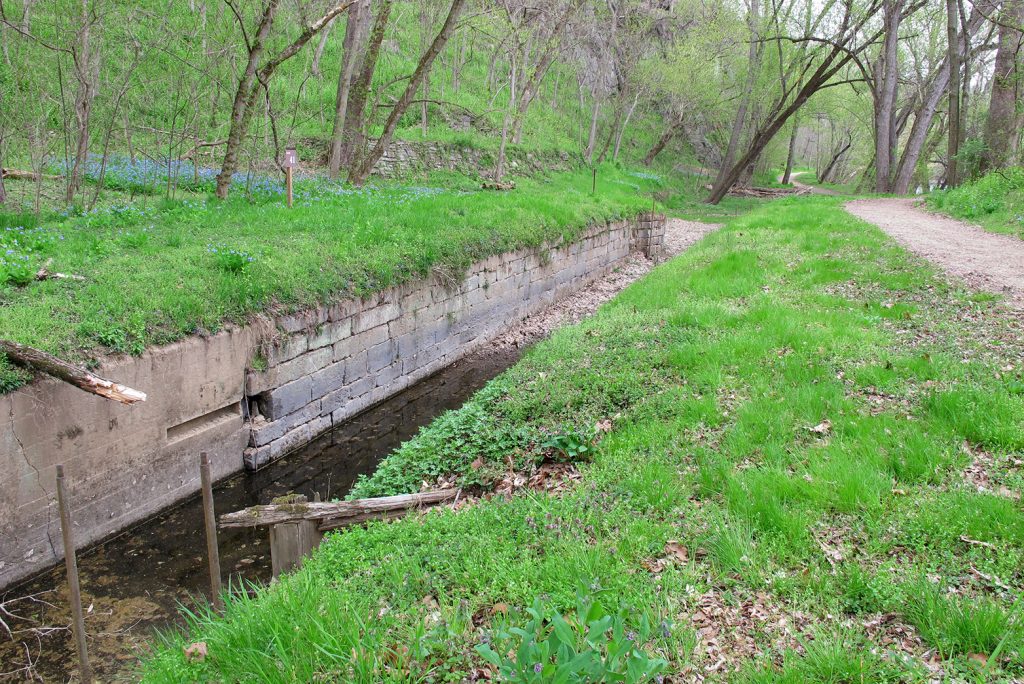
Locks 41 and 42 are located at the north end of a calm stretch of Potomac River aptly named “Big Slackwater.” Depending on which direction a Canal boat was headed, locks […]
Lock 40
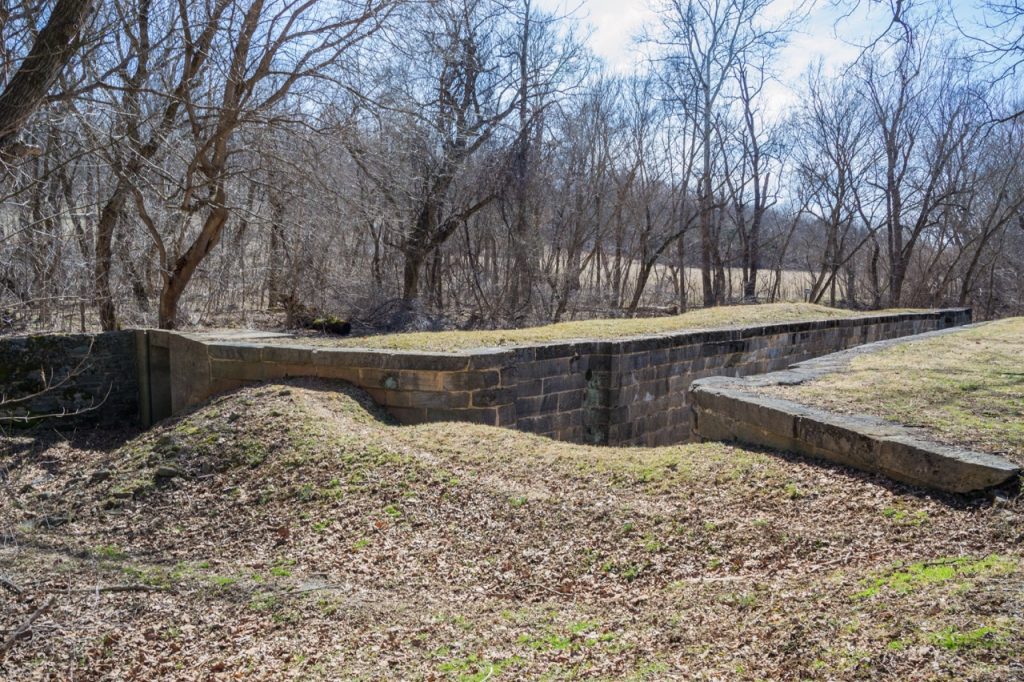
Lock 39
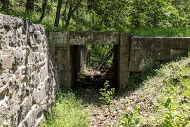
Lock 38 (Shepherdstown River Lock)
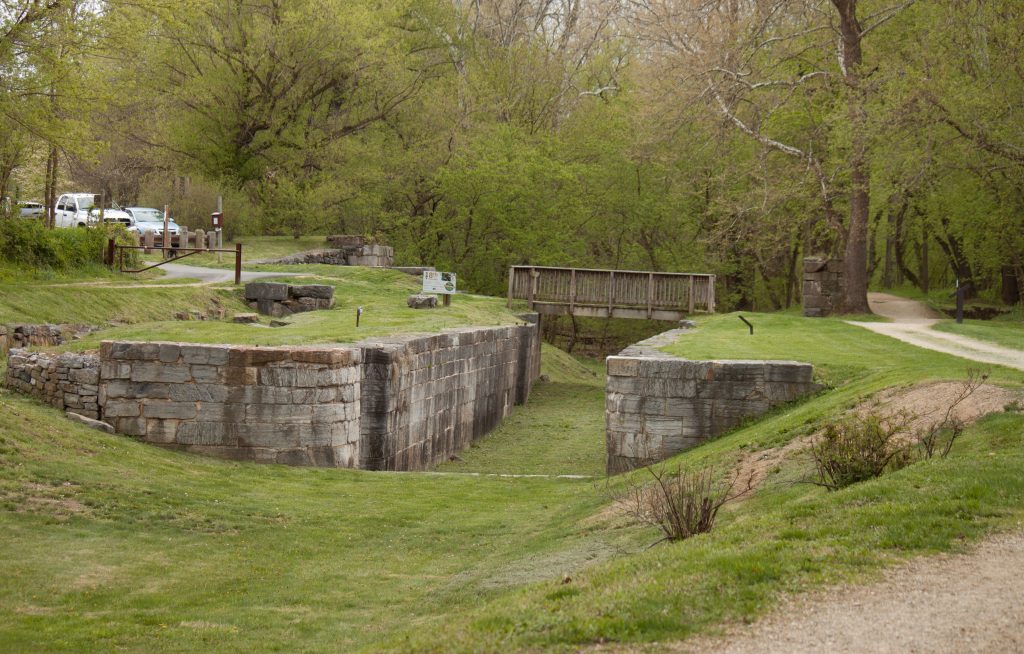
The Shepherdstown River Lock is one of only three river locks on the Canal. Built from gray limestone and meant to draw traffic from the Virginia side of the Potomac […]
